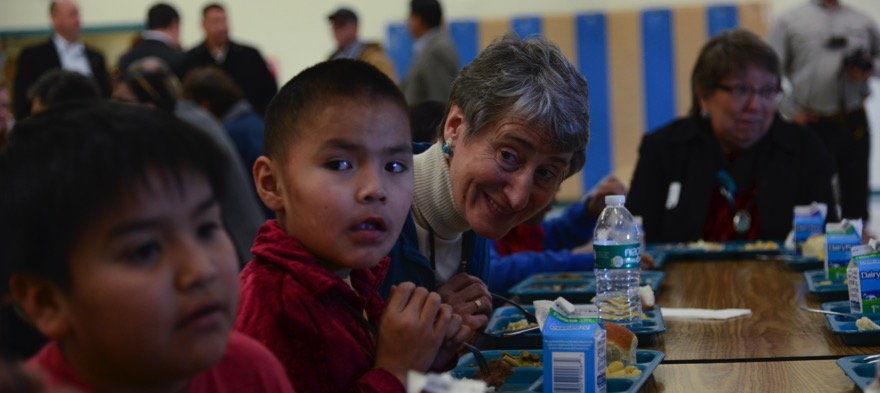
The American Indian/Alaskan Native high school graduation rate is 67 percent, the lowest of any racial/ethnic demographic group across all schools. And the most recent Department of Education data indicate that the Bureau of Indian Education (BIE) schools fare even worse, with a graduation rate of 53 percent, compared to national average of 80 percent.The report also cites that:
Of the 183 BIE schools, 34 percent (63 schools) are in poor condition, and 27 percent are over 40 years old… Sixty percent of BIE-funded schools do not have adequate digital bandwidth or computers to meet requirements of new assessments to college- and career-ready standards.Other investigative articles cite “mold, structurally-unsound buildings, overflowing toilets in disgusting restrooms, unreliable water supplies, freezing or blazing hot temperatures and overcrowding” as some of the conditions that students struggle with on a daily basis. How can we think about schools where “walls talk, where books fly and global boundaries disappear” if there are schools in our country where the learning environment is an immediate threat to students’ health and safety? I have seen these conditions firsthand in five years of education work with Native North American Nations across the U.S. and Canada. While it remains true that the American high school needs to be reinvented, there is a greater, more pressing need to improve at least some of the schools in these conditions. How can we make the XQ school model attainable to BIE schools, which have not yet caught up to high schools in this generation? [pullquote]Before we create super high schools, the playing field must be leveled.[/pullquote]
Yuliya has been working in partnership with various Native North American Nations across the U.S. and Canada to preserve language and culture since 2011. Through her previous work at The Language Conservancy Yuliya began following local, state and federal activities in education policy, language legislation and the education achievement gap. She is interested in bringing together the cross-section of language, education and technology to close the gap. She received her M.A. in Linguistics from McGill University in 2015.
The fight for educational equity has never been just about schools. The real North Star for this work is providing opportunities for each child to thrive into adulthood. This means that our advocacy...
Your donation will support the work we do at brightbeam to shine a light on the voices who challenge decision makers to provide the learning opportunities all children need to thrive.
Ed Post is the flagship website platform of brightbeam, a 501(c3) network of education activists and influencers demanding a better education and a brighter future for every child.
© 2020–2024 brightbeam. All rights reserved.